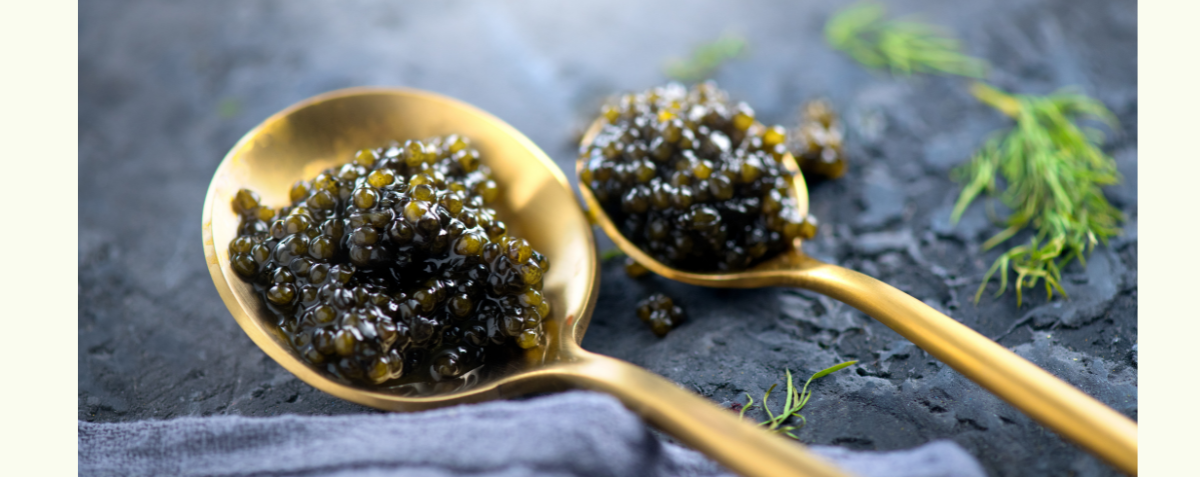
9 Fun Facts About Caviar
From Beluga to Oscietra Caviar to mother-of-pearl spoons and Blinis, Caviar has truly been a staple of fine dining for many centuries now.
With such a rich history, it holds a treasure trove of intriguing facts that might be unknown to even the most loyal Caviar enthusiasts.
So, in this post, we will be unveiling those truths and giving you, the reader, a little more insight into the world of Caviar with these 9 interesting facts.
But before you delve into these fun facts, do take a look at our range of Caviar from the brilliant Caspian Caviar.
Fun Facts About Caviar
1. The word ‘caviar’ actually came from the Persians.
Dating back to ancient Persia, the term ‘Caviar’ comes from the word “khāg-āvar,” which means “egg-bearing.”
2. The most expensive Caviar comes from Albino Sturgeon.
The most expensive Caviar is sourced from Albino Sturgeon due to its rarity. These unique Sturgeon produce eggs that are highly sought after for their exquisite flavour and texture, making them a symbol of luxury.
3. The traditional way to eat Caviar is on the skin.
This method allows you to taste all the subtle flavours and textures of your Caviar without the interruption of other flavours and textures from metal spoons or other utensils.
Want to learn more about how to eat Caviar? Take a look at our post, Mother Of Pearl Spoon: What Is It And Do You Really Need It To Eat Caviar?
4. Caviar has mood-lifting properties.
The omega-3 fatty acids in Caviar may promote brain and mental health. Fatty acids are known to reduce inflammation in the brain and, in turn, help to boost your mood and better your mental health.
5. France consumes around 58 tons of Caviar a year.
Being a French delicacy, it is no surprise that the French love Caviar, so much so that they consume around 58 tons of it per year.
6. Female sturgeons can live up to 150 years.
This long life cycle and slow reproductive rates contribute to the conservation concerns surrounding these species.
7. Red Caviar isn’t real Caviar. It’s Salmon Roe Caviar.
Red caviar, often referred to as Salmon Roe Caviar, is distinct from traditional Caviar as it is derived from salmon eggs.
8. Beluga Caviar is banned in the US.
The United States banned the import of Beluga Caviar, primarily to protect and conserve the Beluga sturgeon, which is critically endangered.
9. The most expensive Caviar is gold-laced Caviar,
The most expensive Caviar on the market is often infused with real gold, adding a stunning element to an already luxurious delicacy. This gold-laced Caviar is a symbol of extravagance and is reserved for the most exclusive occasions.
Bon Appetit!
So now you have a deeper look into the world of Caviar, you’ll be able to come away with some great facts to throw around at your next dinner party.
With fun trivia about its Persian history and its mood-boosting properties, you’re practically a Caviar expert, and with these facts, we’re sure, like us, you’ll have a deeper appreciation for Caviar and its opulent qualities.
If you want more information on all things Caviar, then our post on How To Store And Serve Caviar has everything you need.
